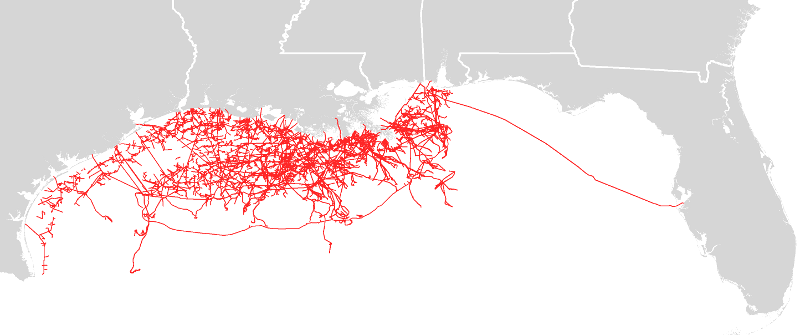
pipelines under the Gulf of Mexico
Source: US Department of the Interior, Bureau of Ocean Energy Management Geographic Mapping Data, Pipelines

pipelines under the Gulf of Mexico
Source: US Department of the Interior, Bureau of Ocean Energy Management Geographic Mapping Data, Pipelines
If oil and gas is discovered in commercial quantities under the Outer Continental Shelf of Virginia, gathering pipelines will be constructed to move the hydrocarbons from wells to tank farms onshore. The Gulf Coast is already criss-crossed by underwater pipelines, demonstrating how such infrastructure could be built off the Virginia coast without interfering excessively with Navy/Coast Guard operations, shipping traffic, and the dredging of shipping channels.
Based on the Submerged Lands Act passed by the US Congress in 1953, the Federal government would be responsible for permitting the use of the ocean bottom, more than three miles offshore. Within three miles of the coastline, the state of Virginia would authorize use of submerged lands for pipelines.
Location of any new underwater oil pipeline would depend upon the location of a new oil refinery on the East Coast, or a pipeline connection to the existing refineries in the Philadelphia-New Jersey area. If the pipeline was not constructed underwater directly to the Delaware River, it could come ashore in Virginia in Hampton Roads. One speculative destination: the old Yorktown refinery, where another expansion of Colonial Pipeline could transport crude oil north to existing refineries.